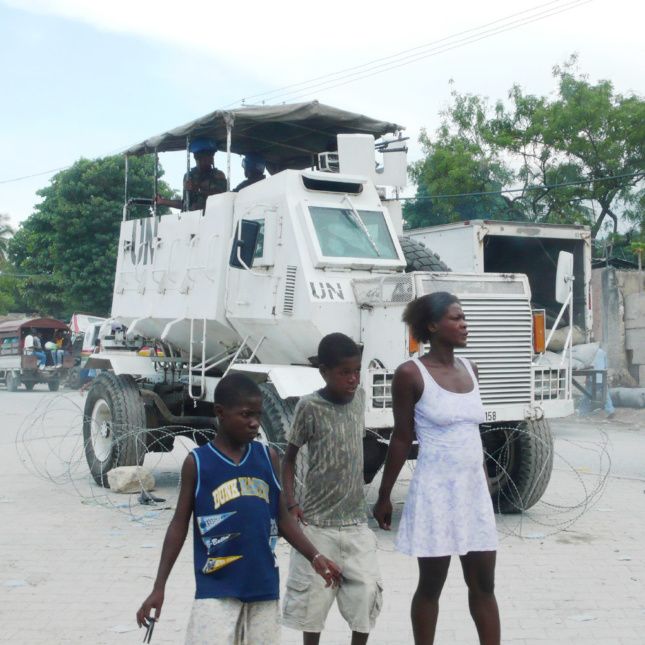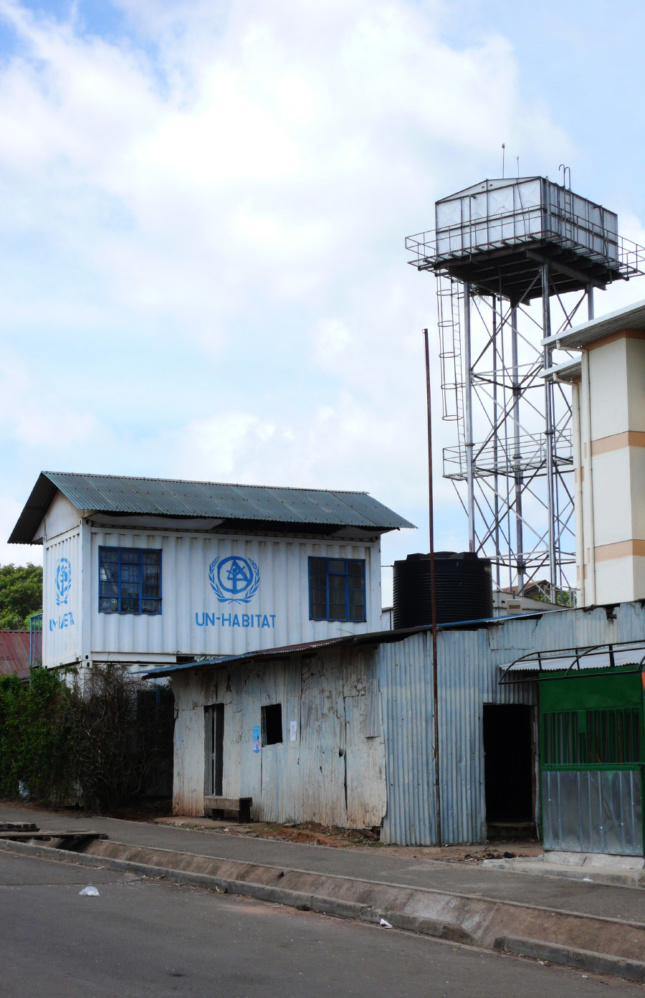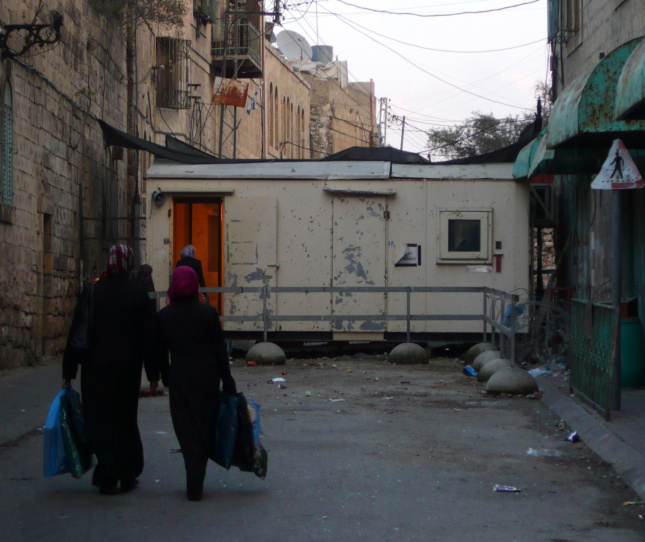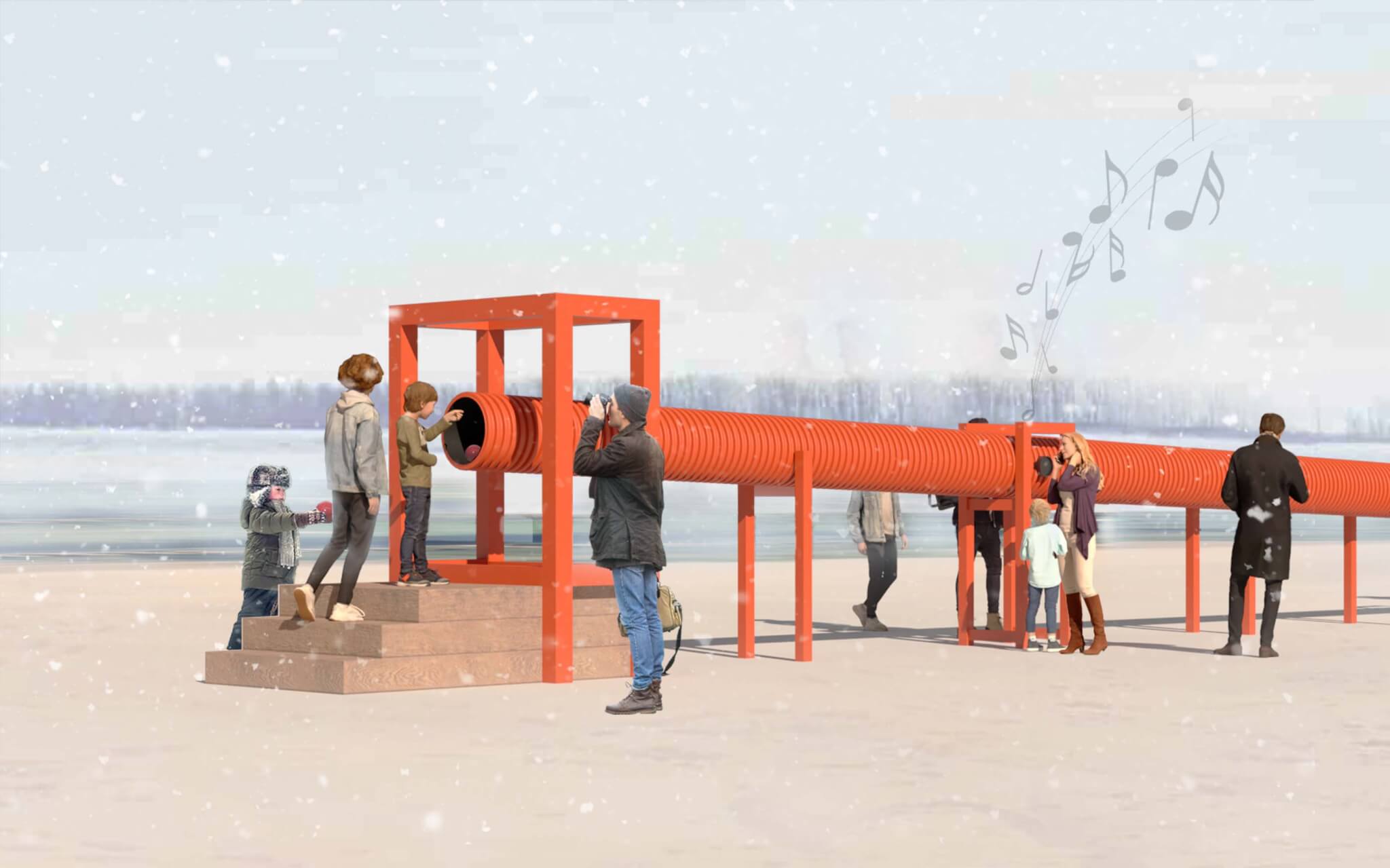Over the past decade or so, architecture has seen a wave of interest in humanitarian design. Once a marginal subfield, humanitarian architecture has come into the mainstream of the discipline through exhibitions, institutions, and practices: the 2016 Venice Biennale curated by Alejandro Aravena; MoMA’s Small Scale Big Change, Uneven Growth (2016–2017) and Insecurities (2010–2011) shows; Cooper Hewitt’s series Design for the Other 90%; organizations like Architecture for Humanity (AfH) and Architecture Sans Frontières (Architecture Without Borders); prominent architects like Aravena, Frances Kéré, and Shigeru Ban, and younger practices like MASS Design Group and Rural Urban Framework.

While this turn toward a newfound sense of altruistic purpose was perhaps a needed corrective, arriving just as the myth of the “starchitect” was imploding with the 2008 financial crash, the apparent benevolence of humanitarian architecture belies a far more complicated set of ethical dilemmas. Despite the suggestion by Cameron Sinclair, the founding director of Architecture for Humanity, that he had “six billion clients” compared with the very few who could afford a certain Pritzker Prize winner, architecture in the name of a universal humanity obscures the fact that the powers that made a group like AfH’s work possible represent particular alignments of interests and actors. These actors—international NGOs, national governments offering development aid, private foundations and philanthropies, corporate social responsibility programs, and supranational entities like the United Nations (UN), the World Health Organization, and the World Bank—are certainly not the “humanity” invoked by Sinclair, but rather comprise a heterogeneous complex of international organizations, infrastructure, laws, technologies, industries, and weaponry. Humanitarian architecture participates in a series of entanglements that take cover under the name of humanity, and the humanitarian project is enlisted, often knowingly, in the interests of national or international security and economic globalization. Rather than pursuing a righteous moral position self-evidently aligned with “the good,” architectural practices that work in the context of disaster relief operations or refugee crises could make evident the complexity of their ethical commitments.
One way for architects to do so is to consider the spatiality of aid operations. Rony Brauman, the former president of Médecins Sans Frontières (Doctors Without Borders), introduced a key term into the lexicon of aid work, the concept of “humanitarian space,” an operational environment in which humanitarian organizations are free to deliver aid without the interference of political forces. Crucial to Brauman’s definition is the political independence and neutrality, at least in theory, of the institutions, technologies, and actors that participate in relief efforts. The concept of humanitarian space thus implies the separation of a moral imperative from the narrow interests of politics, one oriented toward the preservation of human life and the lessening of suffering.

While Brauman understands humanitarian space as a neutral sphere, architects are perhaps better prepared to recognize the politics at work in the repertoire of spatial and architectural forms through which this abstract space becomes instantiated, localized, and concretized in specific cities following a disaster or conflict. Unlike the abstract “space” of humanitarian space, these particular physical spaces suggest the outlines of the political and economic interests at work in humanitarian contexts. The buildings, walls, checkpoints, and infrastructures that organize these spaces give weight, form, and durability to Brauman’s concept of humanitarian space. The spatial devices of humanitarian aid, such as tent camps, peacekeeping bases, water and sanitation systems, as well as more complicated derivatives like export processing zones, are repeated in similar physical forms at sites across the globe, but in each context nonetheless produce a different configuration of the surrounding space. Architects are perhaps uncommonly attuned to the ways in which these spatial-architectural forms act as a kind of short-circuit between the universalizing claims of the humanitarian project and the particularities of the sites that are the staging grounds of humanitarian operations.
Sites of humanitarian operations are organized by a repertoire of architectural techniques of separation and incorporation, dividing the spaces of relief operations from civic life while simultaneously negotiating adjacencies and channels of circulation between the city and humanitarian spaces. Walls separate the normal order of a city from a tent camp, slum, export processing zone, or embassy complex, while the gates and checkpoints of these places regulate the movement of people and supplies across their boundaries. The temporary shelters provided by humanitarian organizations offer relief from homelessness and space for daily routines, but also indefinitely defer the resettlement of displaced populations.
In simultaneously separating and incorporating, humanitarian spatial devices participate in what the anthropologist Didier Fassin paradoxically terms “humanitarian government.” A humanitarian government, in Fassin’s conception, works not only across national borders, but also on the very boundaries between state and non-state formations and between universal moral imperatives and particular political conflicts. The result is a form of international humanitarian order that is sustained through the coordinated activities of NGOs with national and local governments, supranational organizations like the UN, military operations, and multinational corporations.

The recent resurgence of nativist politics in the U.S. and Europe represents a significant challenge to the future of this humanitarian order, or at least proves that the spatial devices it employs in the name of humanity can easily be turned toward violently nationalist ends. But this has always been the case: The spatial form of the refugee camp, of course, has its origins in military operations, as do the bases of peacekeeping missions. Many manufacturers of relief aid supplies are offshoots of defense contractors. The most sophisticated spatial practices for managing displaced populations can be found in ethno-nationalist states. The threat of the withdrawal of America and European states from the liberal international order, including its humanitarian mandate, is likely only to exacerbate humanitarian crises, as seen in the past several years in Europe’s response to migration from Syria and North Africa, and most recently on the U.S.-Mexico border.
Faced with the violence of the nation-state, architectural practice in humanitarian contexts could rethink the spaces of refugee camps and settlements as representing the possibility of a non-state politics. Humanitarianism claims a moral purpose, in that it acts not in the interests of any parties, but for the good of humanity itself. In this sense, humanitarianism is sometimes seen as opposed to or transcending political life. But humanitarian operations and their effects on cities are perhaps opposed not to the political, but to the state; or, more precisely, to the spatial ordering of state territory through the institutions of private land ownership and national boundaries. Humanitarian spaces point toward new spatial and political formations: governance structures, property laws, and models of land tenure that respect the complex forms of ownership seen in refugee camps and other communities where no land titles exist, or where land has never been formally divided into parcels, or where a legal distinction between public and private space is not specified. The refugee camp is therefore not outside the realm of politics, but rather points toward a political community beyond the nation-state, and beyond property and territory, the spatial extensions of the state.
Seen in this light, humanitarian spaces, like camps and settlements, might not be outside the polis; rather they are emerging sites of non-state politics. The architecture of these humanitarian spaces would be designed not for a universal humanity reduced to its basic needs, but for the humans of a political life still to come.
Benedict Clouette and Marlisa Wise are the authors of Forms of Aid: Architectures of Humanitarian Space.











